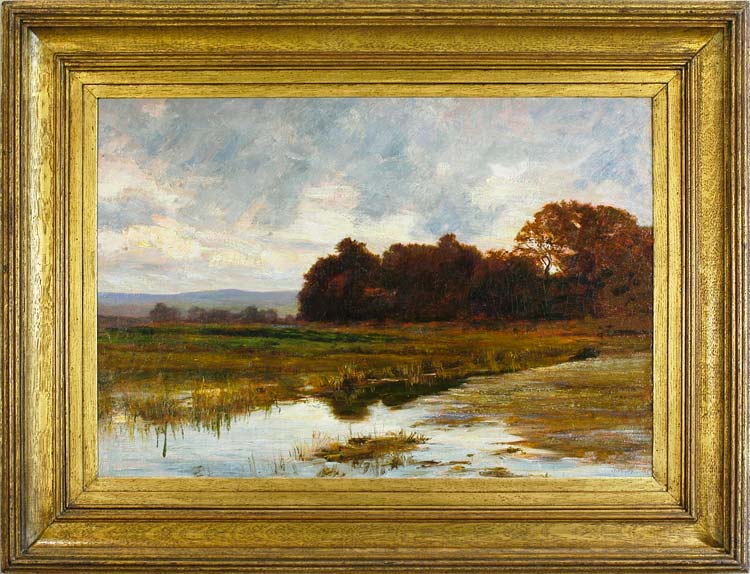Wilkinson’s ability to reproduce the effects of light at different times of day and under different weather conditions are very evident in this characteristic scene of a stretch of water in the New Forest. It is not known where or if he were trained, or whether he was an instinctual painter; he shows great skill in manipulating both linear and colour perspective to evoke the immense spaces of these open landscapes, and in using his brushwork to describe reflected light on water or the movement of clouds. He is a realist painter and an artist of working rural life, depicting sheep grazing in the shadow of forest trees, light scattered through thick canopies of foliage, or hay ricks being built in late afternoon sunlight. In all these works the texture of stubble, scrub, grass and reeds is masterfully portrayed.
Works in public collections include New Park Farm, Brockenhurst, New Forest Museum and Library; a painting in Dudley Museum and Art Gallery.
Biographical details
Hugh Wilkinson (1849-1948) was a landscape painter who lived and worked principally in the New Forest. He had been called to the Bar and practised as a barrister, but at about the age of thirty he gave up this career to work full-time as an artist. He exhibited locally, in provincial exhibitions, in the Royal Academy (which accepted over forty of his paintings: e.g. The village church, R.A. 1910, no 51), and in various locations in Australia, New Zealand and America. He continued to paint to within a few months of his death, aged 98; his guiding principle being ‘the intensest appreciation and love of Nature’.


